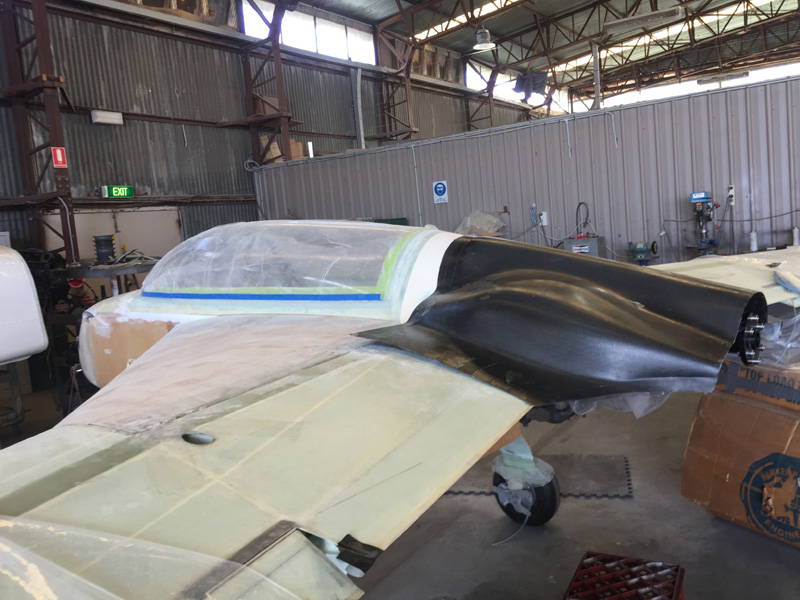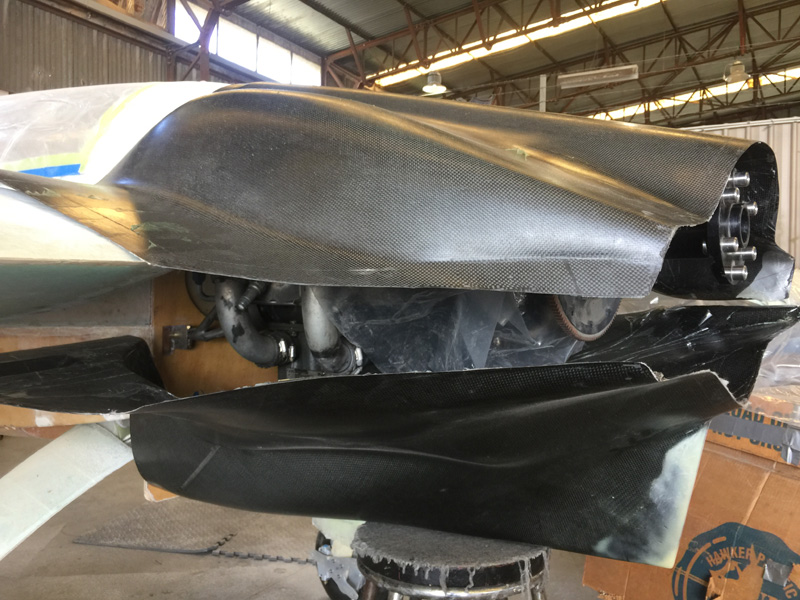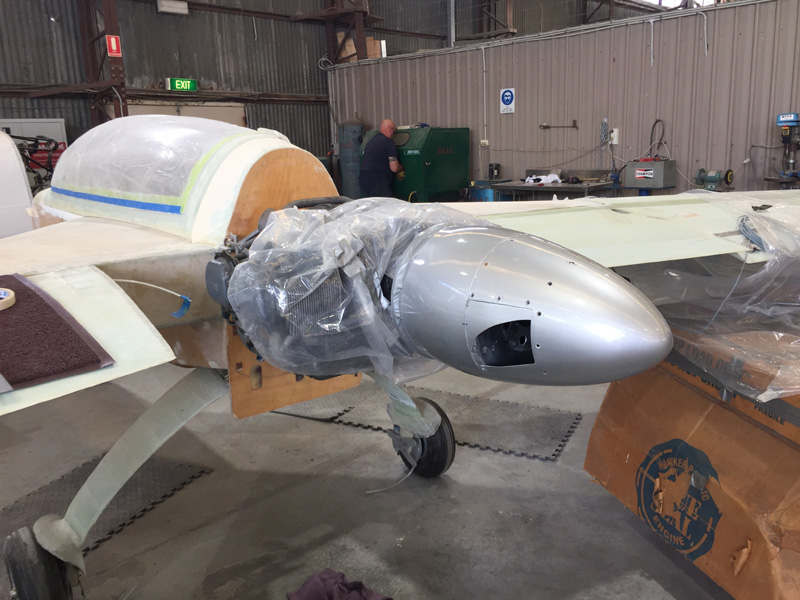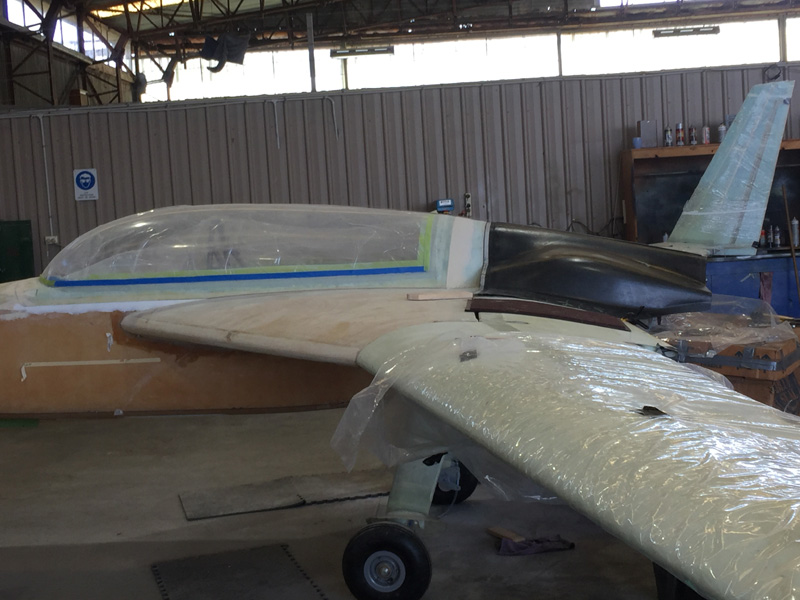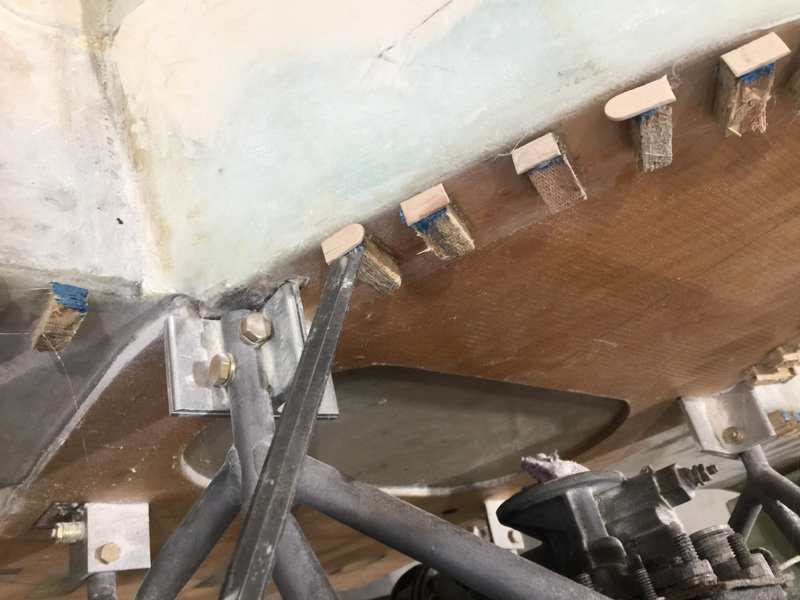| Date: 10-23-2018 | |
| Number of Hours: 10 | |
| Manual Reference: 23-2 |
After reviewing all the material I could including Mike Melvill’s instructions and the LE plans, I still spend another two days really thinking about it at the hangar. I finally have a plan.
Here’s the top cowl just sitting at a good angle, aesthetically.
Here is how the top and bottom cowls fit as delivered. A bit or work is required for a perfect fit.
I’ve borrowed a spinner that goes with a Savier ‘Black Bart’ prop. Crazy big right? It was useful in visualizing how the top cowl will sit and I spent a while talking myself into the fact that the engine is pretty much straight. I did a lot of measuring too as things were looking crooked to the left. The measurements however told me the engine is within .05 or within the ‘noise’ of rough checking. After a few hours I decided to soldier on.
As a plan formed. I decided I wanted a 1.5″ lip and marked out the difference.
It was an easy cut with a dremel and a metal cutting disk. I now have carbon fiber black all over me around the safety gear I was wearing.
This is tough to explain. I’ll try. I’m just installing the top cowl first. Plans have you join the two now at the trailing edge. Bad idea IMHO.
I don’t think this will work as well as getting one installed perfectly and then matching the bottom cowl to fit. On these Melvill cowls there is a joggled lip. Now it needs to go BUT I can use it as a former for the initial top lip on the spar and rollover.
Yes I’m going to make the plans lips then add to them per the Melvill instructions. Although not exactly. That joggle is really 5 plies of BID deep. Interesting.
My spar is sightly lower than my wings now they are all butted up and installed. Just a little, so it makes sense to use this when making my cowl lips. I like the plans method as it has to be strong. I am going to lay up 5 plies on the top of the spar and turtleback into the cowl joggle which I will line with release tape.
Does this make sense? On the turtleback I need to set up the cowl so it sits flush with the edge. To do that I need to make a support for the cowl in line with the edge. To do this, pay attention, <grin>, I need to set cowl supports lower by the cowl thickness.
That what those stick pieces are on the top of the supports. A stick the thickness of the cowl. On the spar I want the edge to be higher so I don’t need that spacer. This will reduce the amount of filler I use later to get it all to play nicely together and be level.
In this shot you can see the little sticks on the turtleback are not removed. But I did! I just forgot a photo so please imagine it.
When I put the cowl on for the first trial fit it should sit exactly level with the turtleback less the thickness of 5 plies of BID. However it will be proud on the spar or rather when I do the layup between the spar and cowl it will be level. Forward of the spar there will be a joggle on the top spar edge. That’s OK as there is a bit of a dip there because of the curved strakes. Man! This is not a simple build.
I’ll find out how it goes with the first fit. At that point I can look at trimming the edges at the wings for a perfect trial fit. I added some stick there which you can see in the last shot.
On another point for those of you with the Mike Melvill cowls, his instructions talk about making the front edge longer aft so the cowls match the wings. If you got your cowls from Greg at Aerocomposites (successors to Featherlite) then you will see that there is enough extra meat in the way he makes them for this not to be an issue. You can just see faintly on the cowls where the exact Melvill part was and yes it may have been an issue. Gregs cowls give you a couple of inches extra to play with.
This means your lip size is really now determined by the sort of fasteners you will be using. If its camlocs, an inch and a half is a good lip size. Feeeewww!! Got all that?

